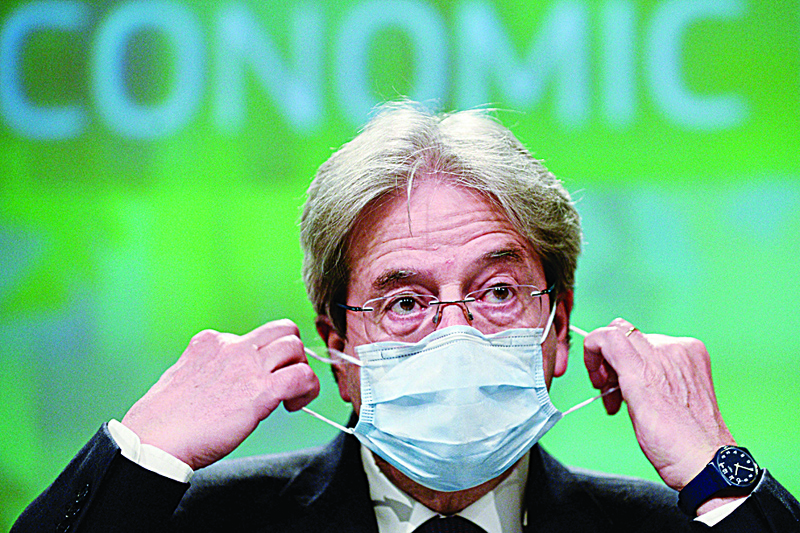BRUSSELS: The EU yesterday sharply revised its growth forecasts for this year and next, saying an accelerated vaccination drive and the bloc's landmark recovery plan would lift Europe out of recession. "Recovery is no longer a mirage. It is under way," EU economic affairs commissioner Paolo Gentiloni told a media conference.
The pickup in growth confirms forecasts by the IMF and other data that showed an increase in manufacturing and greatly improved confidence by consumers who see a happy end to the long winter of COVID-related restrictions. Europe also hopes to quiet criticism that it has fallen short in jumpstarting its economy compared to the US where the economic activity has already roared ahead on the back of major stimulus plans.
According to the European Commission, growth in the 19 countries that use the euro currency will hit 4.3 percent in 2021 and 4.4 percent in 2022, compared with 3.8 percent for these years in its previous estimate given in February. For the full 27 members of the EU, the commission said the economy will expand by 4.2 percent in 2021 and by 4.4 percent in 2022.
"The shadow of COVID-19 is beginning to lift from Europe's economy," Gentiloni said, though he cautioned that "the risks of a scarring effect remains real". If the growth is confirmed, the European economy will have sped out of a second recession in less than year, after a slow rollout of COVID vaccines stymied a first economic recovery in the winter of 2020-21. It would still be trailing the other two biggest economies in the world, however. The United States is forecast to reach growth of seven percent this year - its fastest pace since the 1980s - and China is looking similarly buoyant.
Public debt
The EU said public debt in the eurozone will be at historic levels, with a debt pile stuck at above 100 percent of annual GDP over the next two years. This public debt is particularly high in Greece, at 208.8 percent in 2021, and Italy at 159.8 percent of GDP. But despite the historic budget-busting, Gentiloni insisted that major public spending "has been - and remains - essential in helping Europe's workers and companies to weather the storm".
That includes the EU's landmark 750-billion-euro ($910-billion) recovery plan, which was decided almost a year ago but is expected to only start paying out later this summer. Gentiloni said that, largely thanks to that recovery package, "the EU is now projected to recover to its pre-crisis level in the fourth quarter of '21" and the eurozone would reach that point in the first quarter of 2022.
Out of the major eurozone economies, Spain and France, which were particularly hard hit in 2020, will have the highest growth rates in 2021, both nearing six percent, according to the Commission's estimates. Growth will be more moderate in Germany, at 3.4 percent, and the Netherlands, at 2.3 percent, as they were slightly less affected last year. - AFP




